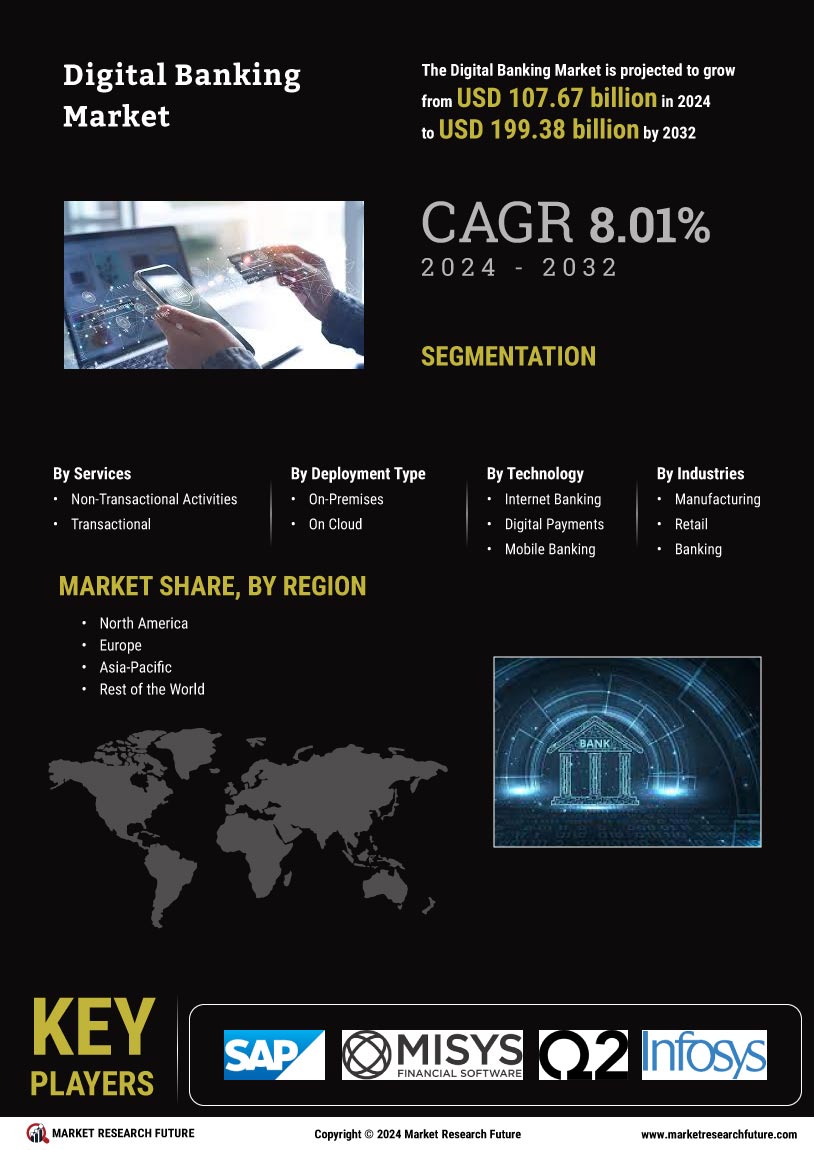Digital Banking Market Summary
As per Market Research Future analysis, the Digital Banking Market was valued at 107.67 USD Billion in 2024 and is projected to grow to 251.36 USD Billion by 2035, with a CAGR of 8.01% from 2025 to 2035. The market is driven by increasing smartphone penetration, improved internet connectivity, and a shift towards contactless payments, alongside regulatory support for fintech innovations.
Key Market Trends & Highlights
Key trends driving the Digital Banking Market include technological advancements and changing consumer preferences.
- Smartphone penetration reached 78% in 2023, with 6.9 billion subscriptions globally.
- 62% of the world's population had active internet access in 2023, enhancing digital banking capabilities.
- Contactless payments accounted for over 50% of card transactions in the Euro area in 2022.
- Over 40 jurisdictions introduced new regulations in 2022 to support fintech innovations.
Market Size & Forecast
| 2024 Market Size | USD 107.67 Billion |
| 2035 Market Size | USD 251.36 Billion |
| CAGR (2025-2035) | 8.01% |
Major Players
Key players include HSBC, Barclays, UBS, American Express, Bank of America, Deutsche Bank, BMO Financial Group, JPMorgan Chase, Wells Fargo, Goldman Sachs, Capital One, Morgan Stanley, PNC Financial Services, Citigroup, and Santander.

















Leave a Comment